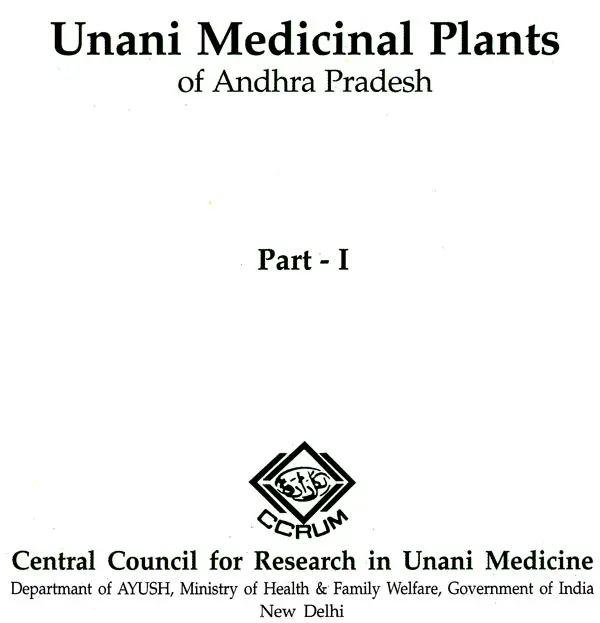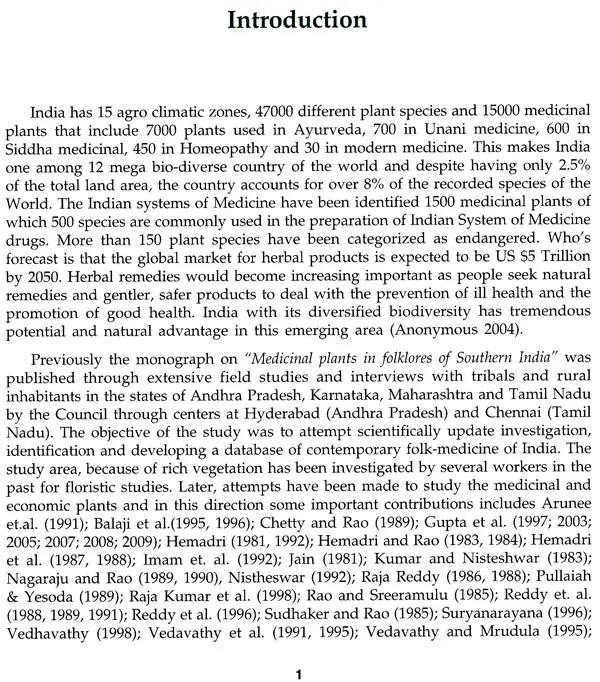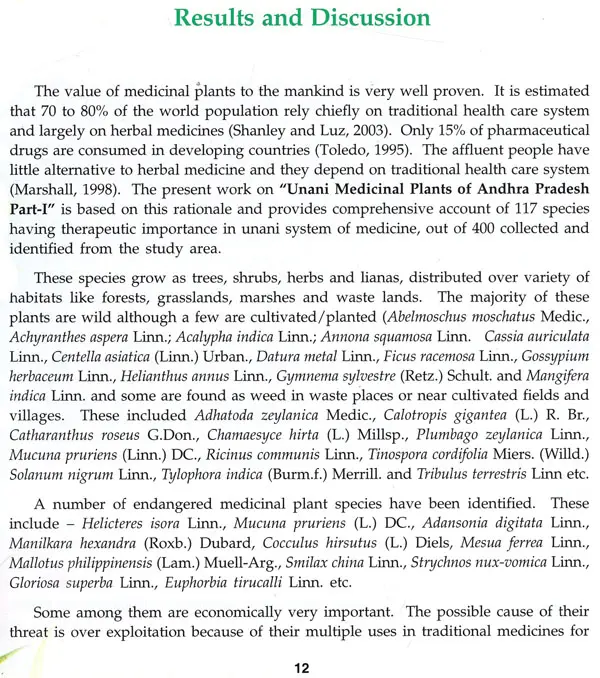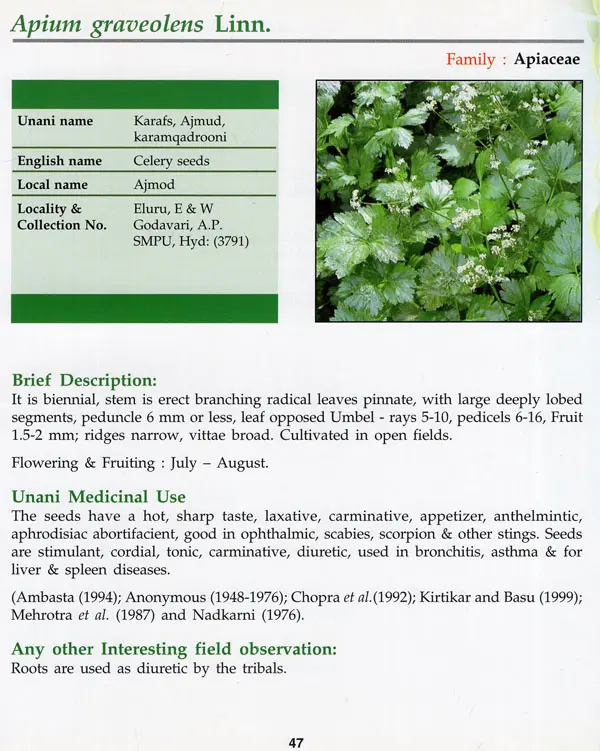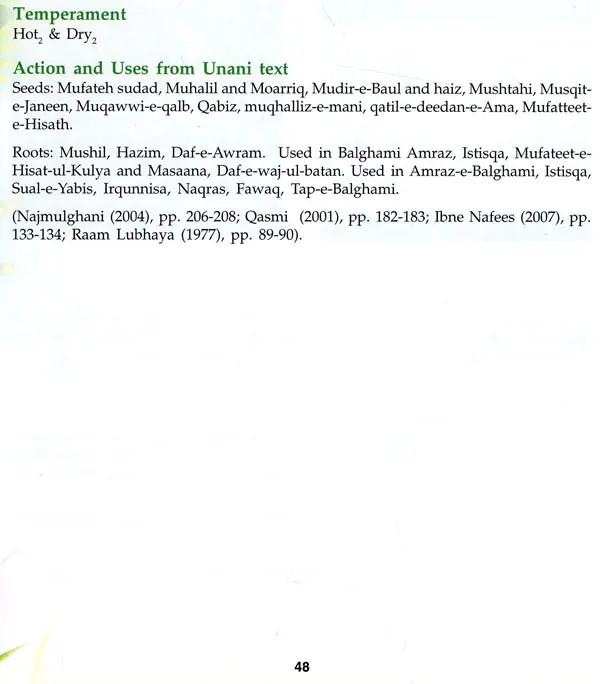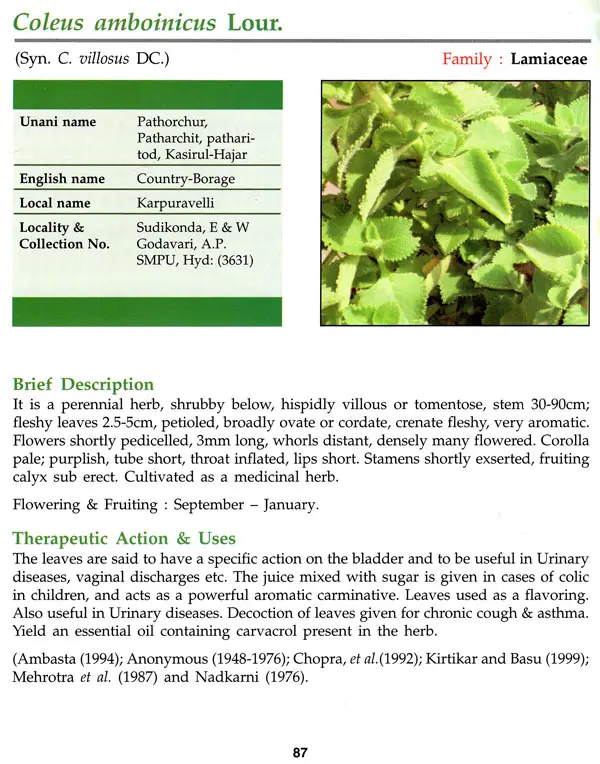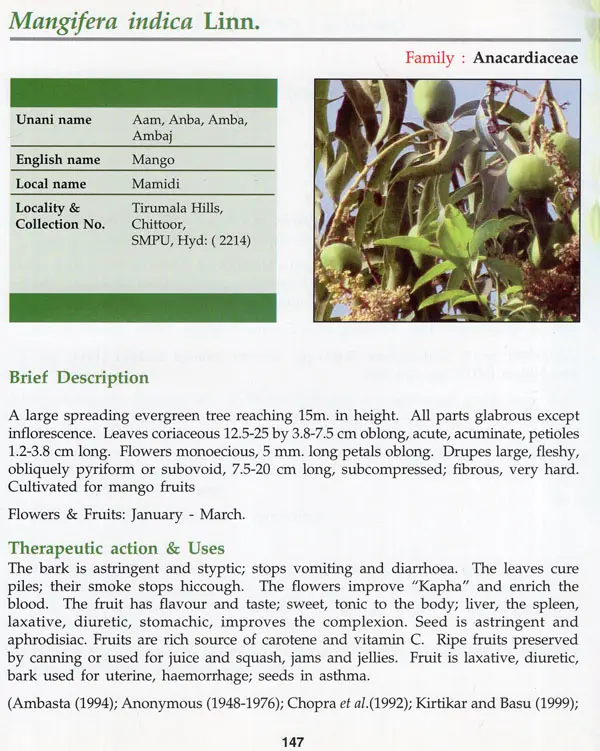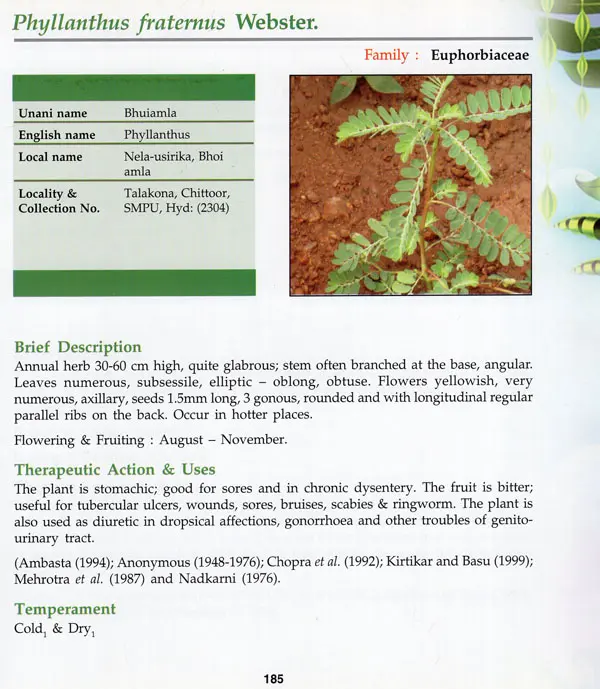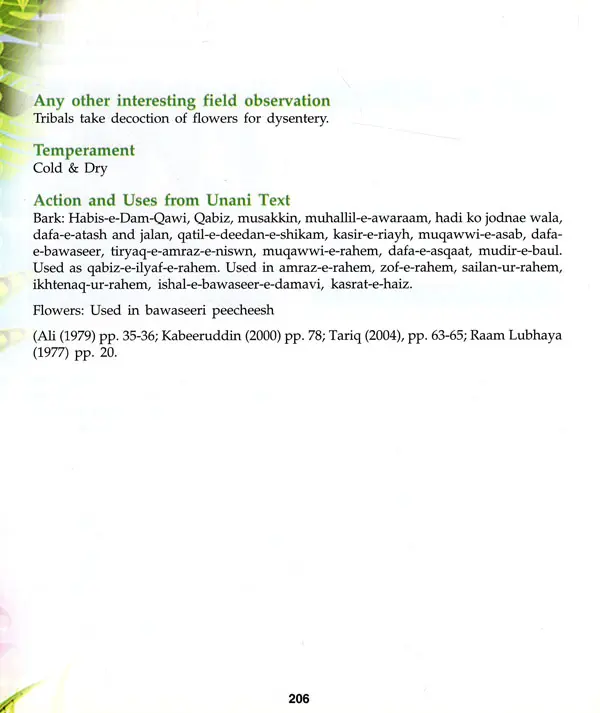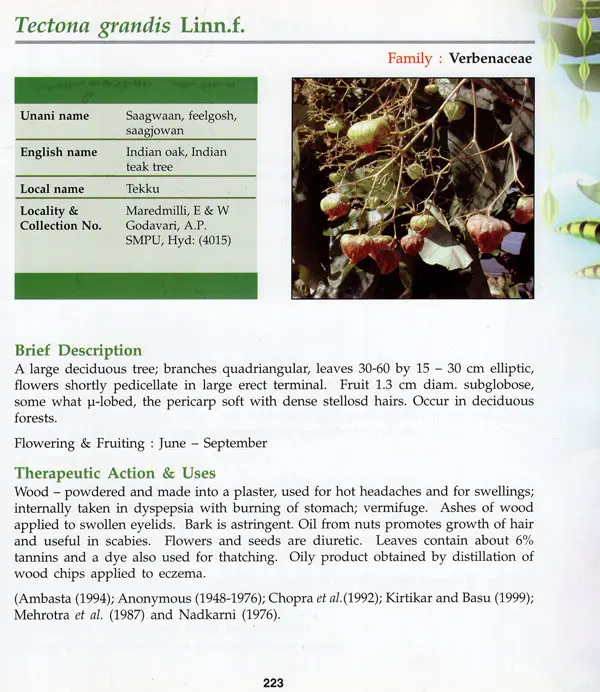
Unani Medicinal Plants of Andhra Pradesh (Part I)
Book Specification
| Item Code: | UBC985 |
| Publisher: | Central Council for Research in Homoeopathy, New Delhi |
| Language: | English |
| Edition: | 2010 |
| Pages: | 298 (With Colored Illustration) |
| Cover: | HARDCOVER |
| Other Details | 8.50 X 8.50 inch |
| Weight | 950 gm |
Book Description
India is exceptionally rich in medicinal plants wealth. The supply base of 90% herbal raw drugs used in the manufacture of Unani, Ayurveda and Homeopathy systems of medicine is largely from the wild. Plants are also used in various industries providing herbal items other than medicines. Large-scale use of medicinal plants and herbs has depleted many of the species from the wild, bringing some to the edge of extinction. Open access to medicinal plants in the wild is perhaps one of the main reasons for the current unsustainable levels of harvesting. Other factors contributing to un-sustainability include lack of sufficient data on wild plant populations, marketing and trading, inadequate regulations and legal protection, and poor access to appropriate technology for sound harvesting and plantation development. Data on threatened species including those used in ISM&H are rare but national studies show 120 medicinal plants are rare or endangered in India, at least 77 in China and 75 in Morocco.
Medicinal plants are a valuable source of therapeutic substances for the treatment of various diseases and conditions. Current trend all-over the world has shown that for one reason or the other, people are not only willing to try natural medicines especially those of plant-based but are also actively seeking non-conventional remedies. The WHO has estimated that about 80% of the population of developing countries relies on traditional medicines, mostly plant drugs, for their primary health care needs. The international market of herbal products is estimated to be US $ 62 billion per year poised to grow to US $ 5 trillion by the year 2050. The demand for plant based medicines is, therefore, increasing worldwide.Some 342 plant species have wide application in the Unani system of medicine. Most of these plants grow in the wild as natural component of vegetation of a particular region and the supply chain is carried out informally. However, this traditional base of medicinal plants is shrinking at an alarming rate due to over-exploitation and population pressure. In the absence of a scientific system for collection and fostering regeneration of such medicinal plants, several species have either been completely lost or become endangered. ISM&H industry constantly face the problem of raw material supply and its quality. Therefore, there is an urgent need for periodical systematic explorations of medicinal plants in different agro-climatic zones of the country to ascertain the availability status of medicinal species in reference to their relative abundance in a particular area, and suggest effective measures for their conservation and protection. Based on this rationale, the Central Council for Research in Unani Medicine has been undertaking medicinal plants explorations with close attention to Unani medicinal plants in the forest rich tribal inhabited areas of different states of the country since 1978 and brought out several publications.
**Contents and Sample Pages**
